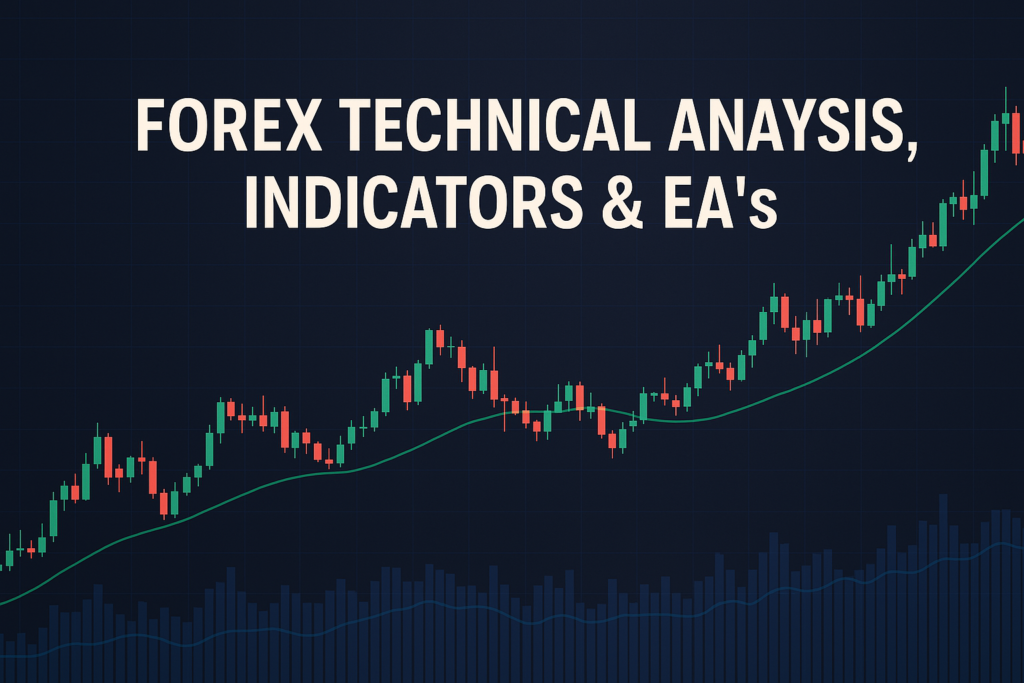
Moving average deviation is a key concept in Forex trading that helps traders identify trends and make informed decisions.
In the world of Forex trading, understanding the moving average deviation is crucial. This concept helps traders gauge price movements and identify trends. It is a tool that smooths out price fluctuations, making it easier to read market signals. For both beginners and professionals, grasping moving average deviation can be the key to successful trading.
However, many traders struggle to apply this concept effectively. They may confuse different types of moving averages or misinterpret signals. This confusion can lead to poor trading decisions and lost profits. That’s why understanding and applying moving average deviation is essential for traders looking to enhance their strategies.
This article will cover what moving average deviation is, its history, advantages and disadvantages, how to apply it on trading platforms, and various trading strategies. By the end, you’ll have a solid grasp of moving average deviation and how it can improve your trading experience.
When considering moving averages, the best time frame for moving average can significantly impact your trading results. Different time frames can reveal different trends and signals. It’s essential to choose one that aligns with your trading style and goals.
What is a Moving Average Deviation?
Simply put, moving average deviation is a way to measure how far a price moves from its average over a specific period. Imagine you’re tracking the temperature in your city. If the average temperature is 20°C, but one day it reaches 30°C, that’s a significant deviation. In Forex, traders look for similar deviations to understand market behavior.
Types of Moving Average Deviation
There are several types of moving averages used in Forex trading:
- Simple Moving Average (SMA): This is the most basic type, calculated by averaging prices over a set period.
- Exponential Moving Average (EMA): This type gives more weight to recent prices, making it more responsive to price changes.
- Weighted Moving Average (WMA): This method assigns different weights to prices, allowing traders to focus on specific data points.
How Moving Average Deviation Smooths Out Price Action
Moving averages help traders see the overall trend without getting distracted by daily price fluctuations. For instance, if a stock price bounces up and down, a moving average can show a clearer upward or downward trend. This smoothing effect is valuable for making informed decisions.
Common Periods Used and Why
Traders often use common periods like 10, 20, 50, or 200 days for moving averages. Shorter periods react quickly to price changes, while longer periods provide a broader view of the trend. Choosing the right period depends on your trading strategy and goals.
The History of Moving Average Deviation: How It Became Popular
Origin of Moving Average Deviation
The concept of moving averages dates back to the early 1900s. It was developed to help traders analyze stock prices more effectively. The idea was simple: by averaging prices, traders could identify trends and make better decisions.
When Did Traders Start Using It Widely?
As technology advanced in the late 20th century, moving averages became more popular among traders. The introduction of computers made it easier to calculate and visualize moving averages. Soon, it became a staple tool in every trader’s toolbox.
Real-Life Stories
Many professional traders have credited their success to understanding moving average deviation. For example, a trader named John used moving averages to identify a bullish trend in the Forex market. By following the signals, he made significant profits during that period. Stories like John’s inspire others to delve deeper into this powerful tool.
Advantages and Disadvantages of Moving Average Deviation
Advantages:
Here are some advantages of using moving average deviation:
- Helps Identify Trends Easily: By smoothing out price data, moving averages make it easier to spot trends.
- Useful for Dynamic Support and Resistance: Moving averages can act as support or resistance levels, guiding traders in their decisions.
- Works Well for Crossover Strategies: Traders often use moving averages to signal buy or sell opportunities based on crossovers.
Disadvantages:
Despite its advantages, moving average deviation has drawbacks:
- lags behind price movements: Moving averages respond to price changes slowly, which can lead to late signals.
- Can Give False Signals in Sideways Markets: In choppy markets, moving averages may produce misleading signals, causing confusion.
How to Apply Moving Average Deviation on MT4 & MT5
Step-by-Step Guide to Adding Moving Average Deviation on Charts
To add moving average deviation to your charts on platforms like MT4 or MT5, follow these simple steps:
- Open your trading platform and select the chart you want to analyze.
- Click on “Insert,” then choose “Indicators,” and select “Trend.” From there, find “Moving Average.”
- Adjust the settings according to your trading strategy and click “OK.” You’ll see the moving average on your chart!
Customizing Moving Average Deviation Settings
You can customize your moving average settings by adjusting the period, color, and type. For example, a 50-period EMA might be red, while a 200-period SMA could be green. Personalizing your chart can help you spot trends more easily.
Saving Templates for Easy Application
Once you’ve customized your charts, you can save your template. This way, you won’t have to repeat the process every time. Just click “Template” and select “Save Template.” Give it a name, and you’re ready to go!
5 to 7 Trading Strategies Using Only Moving Average Deviation
Strategy 1: All Time Frame Strategy M5 to D1
This strategy allows traders to use moving averages across multiple time frames. For instance, you can look at M5 for entry points, H1 for trend direction, and D1 for overall market sentiment. A buy signal occurs when the shorter moving average crosses above the longer one.
Strategy 2: Trending Strategies
In trending markets, traders can use moving averages to follow the trend. If the price is above the moving average, it indicates an uptrend. A sell signal occurs when the price falls below the moving average.
Strategy 3: Counter Trade Strategies
This strategy involves trading against the trend. For example, if the price has risen significantly above the moving average, a trader might consider selling, expecting a reversal. It’s essential to have a solid risk management plan when using this strategy.
Strategy 4: Swing Trades Strategies
Swing traders can benefit from moving averages by using them as entry and exit points. For example, if the price bounces off the moving average, it may be a good moment to buy. Similarly, a break below the moving average can signal a sell opportunity.
5 to 7 Trading Strategies Combining Moving Average Deviation with Other Indicators
Strategy 1: Moving Average Convergence Divergence (MACD)
By combining moving average deviation with MACD, traders can identify potential buy and sell signals. When the MACD line crosses above the signal line while the price is above the moving average, it’s a strong buy signal.
Strategy 2: Relative Strength Index (RSI)
Traders can use RSI in conjunction with moving averages to confirm trends. If the RSI is above 70 while the price is above the moving average, it’s a potential sell signal. Conversely, if the RSI is below 30, it may suggest a buying opportunity.
Strategy 3: Bollinger Bands
Bollinger Bands can help identify volatility and price levels. When the price touches the lower band while below the moving average, it might signal a buy opportunity. Conversely, if it touches the upper band while above the moving average, it could indicate a sell.
Strategy 4: Stochastic Oscillator
The Stochastic Oscillator can be combined with moving averages for additional confirmation. A buy signal occurs when the oscillator crosses above 20 while the price is above the moving average. A sell signal happens when it crosses below 80 while the price is below the moving average.
For a deeper understanding of the types of Forex traders, knowing how they apply moving average deviation is essential to differentiate your trading approach.
Top 10 FAQs About Moving Average Deviation
1. What is moving average deviation?
Moving average deviation measures how far the price moves from its average over a specified period, helping traders identify trends.
2. How do I calculate moving average deviation?
To calculate it, you’ll need the average price for a specific period. Subtract this average from the current price to find the deviation.
3. What is the best moving average for Forex trading?
There is no one-size-fits-all answer. Generally, the 50-period and 200-period moving averages are popular among traders for identifying long-term trends.
4. Can moving averages predict future price movements?
Moving averages do not predict prices but help identify trends that can inform trading decisions.
5. What are the limitations of moving average deviation?
Moving average deviation lags behind price movements and can give false signals in sideways markets, leading to potential losses.
6. How do I use moving average deviation in my trading strategy?
Incorporate moving averages as trend indicators, support and resistance levels, or use them in crossover strategies for buy/sell signals.
7. Can I combine moving averages with other indicators?
Absolutely! Combining moving averages with indicators like RSI, MACD, or Bollinger Bands can provide better confirmation for trades.
8. What time frames should I use for moving averages?
Use shorter time frames (M1, M5) for day trading and longer time frames (H1, D1) for swing trading. It depends on your trading style.
9. How often should I adjust my moving average settings?
Adjust settings based on market conditions and your trading strategy. Regularly reviewing your approach is crucial for success.
10. Is moving average deviation suitable for all traders?
Yes, it’s a versatile tool that can benefit both beginners and experienced traders when applied correctly.
Conclusion
In summary, understanding moving average deviation is vital for any Forex trader. It helps identify trends, supports dynamic trading strategies, and can be combined with other indicators for better decision-making. Remember, practice makes perfect. Test out your strategies on a demo account before risking real money.
With the right knowledge and strategies, you can harness the power of moving average deviation to improve your trading results.
Sharpen your forex approach with additional expert advice from Statista, Action Forex
Expand Your Knowledge
- 📌 Forex Trading Learning Road Map
- 📌 Forex Trading Course with no Fees
- 📌 Forex Trading Issues, Problems, and Solutions
- 📌 Forex Daily Forecast & Live Updates
- 📌 Forex Fundamental & News Analysis: Tomorrow’s Market Movers & Trade Opportunities
- 📌 Forex Education Hub: Learn & Profit
- 📌 Forex Technical Analysis, Indicators & EA’s
Start Trading Today
Ready to take your forex trading to the next level? Open an account with Exness, one of the most trusted platforms in the industry. 👉 Sign Up Now and trade with confidence!
My recommended broker stands out with ultra-low spreads for beginners, instant withdrawals, and zero spread accounts for pro traders.
Trusted since 2008, lightning-fast execution, no hidden fees, and a secure, transparent trading environment—giving you the edge you need to succeed. 🚀
YouTube Video Library: Related Videos
Note: The video above is embedded from YouTube and is the property of its original creator. We do not own or take responsibility for the content or opinions expressed in the video.



